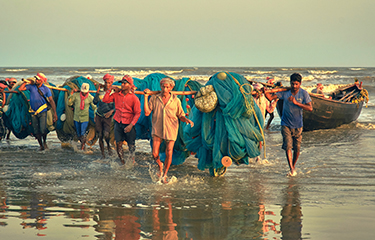CMFRI report finds 86 percent of Indian fish stocks at sustainable levels

A comprehensive marine fish stock assessment conducted by Central Marine Fisheries Research Institute (CMFRI) has determined 117 of 135 fisheries in India, or 86.7 percent of those surveyed, had enough population to support fishing maximum sustainable yield.
Sustainable stocks included various snappers, eels, dolphinfish, lizardfish, and pomfret, while lobsters, croakers, groupers, catfish, and sharks were among the 8.2 percent of fisheries deemed to be overfished.
The first such assessment ever completed in India, CMFRI based its work on stock assessments conducted in the United States and Europe. They acknowledged it was not comprehensive, with the survey limited to 49 finfish species and 21 shellfish species. A larger study is planned in the coming years, according to the Times of India.
CMFRI, a government-backed institution dedicated to conducting research on India’s tropical marine fisheries, said the report was completed as a means of gauging the status of the country’s fisheries and to aid Indian seafood exporters in demonstrating the sustainability of their products.
CMFRI Principal Scientist Shoba Joe Kizhakudan said the Covid-19 pandemic appeared to have temporarily eased fishing pressure, resulting in improved health of fish stocks, similar to the impact the 2019 cyclone cycle had on depressing fishing efforts nationwide. Kizhakudan pointed to the resurgence of the country’s pomfret population as evidence of the rebound many stocks experienced due to the lighter fishing – it just squeaked over the threshold to be considered a healthy fishery in 2022. The squid fishery in Northwest India was also found to be recovering after a collapse a few years ago due to overfishing.
“We will not be surprised if there is a drop in the number of healthy stocks in subsequent assessments,” he said.
The report recommended the implementation of fishing restrictions and regulations, including the creation of minimum legal sizes for some catches and the enlarging of mesh sizes in fishing nets to reduce bycatch. CMFRI Veraval Scientist Rajan Kumar also recommended incentives for the release of sharks and lobsters that are caught as bycatch or as juveniles.
“It’s the slow-growing large fish like sharks [we] have to worry about,” he said.
Photo courtesy of suprabhat/Shutterstock






Share